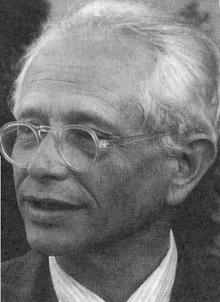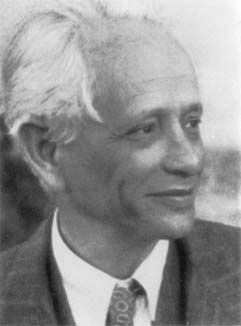

Max Dehn Seminar
on Geometry, Topology, Dynamics, and Groups
Academic year 2009 - 2010
| Date | Speaker | Title — click for abstract (if available) |
| September 2, 2009 | Jing Tao University of Utah |
Linearly bounded conjugator property for mapping class groups
Given two conjugate mapping classes \(f\) and \(g\), we produce a
conjugating element \(w\) such that \(|w| \le K (|f| + |g|)\), where
\(|\cdot|\) denotes the word metric with respect to a fixed
generating set, and \(K\) is a constant depending only on the
generating set. As a consequence, the conjugacy problem for
mapping class groups is exponentially bounded.
|
| September 9, 2009 | Mladen Bestvina University of Utah |
Asymptotic dimension of Mapping class groups
The first talk will review the concept of asymptotic dimension and
some background material. In the second talk I will construct (many)
actions of mapping class groups on quasi-trees, and show how this
implies that mapping class groups have finite asymptotic dimension.
This is joint work with Ken Bromberg and Koji Fujiwara.
|
| September 23, 2009 | Martin Deraux University of Grenoble I (Institut Fourier) | Pinching questions for manifolds of negative curvature |
| September 30, 2009 | Mladen Bestvina University of Utah |
Asymptotic dimension of Mapping class groups, cont.
The first talk will review the concept of asymptotic dimension and
some background material. In the second talk I will construct (many)
actions of mapping class groups on quasi-trees, and show how this
implies that mapping class groups have finite asymptotic dimension.
This is joint work with Ken Bromberg and Koji Fujiwara.
|
| October 7, 2009 | Christopher Cashen University of Utah |
Mapping Tori of Free Group Automorphisms and Line Patterns in Free Groups
I will talk about line patterns in free groups and how they
provide quasi-isometry invariants for mapping tori of linearly
growing free group automorphisms. This is joint with Natasha
Macura.
|
| October 28, 2009 | William Malone University of Utah |
Isometries of Products of Uniquely Geodesic Metric Spaces with the Sup Norm are Reducible
Let f be an isometry between spaces which are products of
uniquely geodesic metric spaces with the sup norm. There are
two obvious types of isometries from such a space to itself
namely a permutation of the factor spaces and a product of
isometries of the factor spaces. In this talk we will show
that not only is the number of factor spaces an isometry
invariant, but also that any isometry is a composition of the
two isometries types mentioned above.
|
| November 11, 2009 | Yael Algom-Kfir University of Utah |
Asymmetry of Outer Space
The Lipschitz metric on Outer Space is not symmetric. In fact
d(x,y)/d(y,x) can be arbitrarily large. In joint work with Mladen
Bestvina, we define a piecewise differentiable function \psi on Outer
Space (which is invariant under the action of Out(Fn) and show that d(x,y)
can be bounded in terms of d(y,x) and \psi(x) - \psi(y). I will discuss
the proof of this theorem and some applications.
|
| November 18, 2009 | Kevin Wortman University of Utah |
Non-nonpositive curvature of some non-cocompact arithmetic groups
I'll explain why arithmetic groups of relative Q-type A_n, B_n,
C_n, D_n, E_6, and E_7 satisfy an exponential isoperimetric
inequality in some dimension.
|
| December 2, 2009 | Mladen Bestvina University of Utah | A new proof of the train track theorem |
| January 13, 2010 | Kasra Rafi University of Oklahoma |
Lengths of curves along a Teichmüller geodesic
We show that the extremal length and the hyperbolic length
of any simple closed curve are quasi-convex functions of time
along any Teichmüller geodesic. As a corollary, we
conclude that, in Teichmüller space equipped with the
Teichmüller metric, balls are quasi-convex.
(Joint work with Anna Lenzhen.)
|
| January 27, 2010 | Juan Souto University of Michigan |
(Non)-actions of the mapping class group on the unit tangent bundle.
By the work of Morita and Markovic, it is known that the
mapping class group of a surface $S$ does not act naturally on $S$.
However, such an action, by Hoelder homeomorphisms, exists on the unit
tangent bundle $T^1S$ of the surface. In this talk I will explain why
this last action is conjugated to a Lipschitz action but not even
homotopic to a smooth one.
|
| January 29, 2010 | Alexandra Pettet University of Michigan |
Periodic maximal flats are not peripheral
I will prove that every finite volume locally symmetric space contains a
compact set K with the property that no periodic maximal flat can be
homotoped to be disjoint from K. This is joint work with Juan Souto.
|
| February 3, 2010 | Jeno Szigeti Miskolc, Hungary | Centralizers in Endomorphism Rings |
| February 10, 2010 | Jing Tao University of Utah |
Teichmüller diameter of the thick part of moduli space
Let S be a closed surface of genus \( g \ge 2 \). The thick part of
the moduli space of S is the set of hyperbolic metrics on S such that
the length of the shortest loop is bounded below by a fixed constant.
We study the asymptotic behavior of the diameter of this set equipped
with the Teichmüller metric and prove that it grows like
\( \log(g) \). This is joint with Kasra Rafi.
|
| March 3, 2010 | William Malone University of Utah |
Quasi-isometric Classification of Geometric Amalgamations of Free Groups
In order to understand the large scale geometry of limit groups
a good starting place is with geometric amalgamations of free
groups (a class of graphs of groups) since they are virtually
limit groups. In this talk a complete quasi-isometric
invariant for geometric amalgamations of free groups will be
given, along with an elementary example showing that
commensurability and quasi-isometry are not the same
equivalence relation for virtual limit groups.
|
| March 5, 2010 | John Parker Durham |
Constructing non-arithmetic lattices
The first examples of non-arithmetic complex hyperbolic lattices
were given by Mostow in 1980. These examples are generalised triangle
groups generated by complex reflections of orders 3, 4 or 5.
I will discuss how to parametrise such triangle groups and how to
identify which of them may possibly be lattices. Most of these
candidates are non-arithmetic. I will then survey an ongoing project
with Deraux and Paupert whose goal is to use this idea to construct
(families of) new non-arithmetic complex hyperbolic lattices.
|
| March 10, 2010 | David Futer Temple University |
Bourdon's building and hyperbolic surfaces
Bourdon's building is a negatively curved 2-complex built out
of hyperbolic right-angled polygons. Its automorphism group is
large (uncountable) and remarkably rich. We study, and mostly
answer, the question of when there is a discrete subgroup of
the automorphism group such that the quotient is a closed
surface of genus g. This involves some fun elementary
combinatorics, but quickly leads to open questions in group
theory and number theory. This is joint work with Anne Thomas.
|
| March 17, 2010 | Anne Thomas University of Oxford |
Lattices in complete Kac-Moody groups
A complete Kac-Moody group over a finite field is a totally
disconnected, locally compact group, which may be thought of as
an "infinite-dimensional Lie group". We study cocompact
lattices in such groups of rank 2, where the associated
building is a tree, using the group action on the tree and
finite group theory. This is joint work with Inna (Korchagina)
Capdeboscq.
|
| April 14, 2010 | Tim Riley Cornell |
Hydra Groups
I will describe some wild geometry that arises in an apparently
benign group theoretic setting: I will exhibit a family of
groups enjoying a number of restrictive geometric and algebraic
conditions (they are CAT(0), bi-automatic, 1-relator, and
free-by-cyclic), and yet these groups have free subgroups of
huge (Ackermannian) distortion. The origin of this behaviour
lies in a simple computational game --- a realisation of
Hercules' battle with the hydra, played out in manipulations of
strings of letters. This is work with Will Dison.
|
| May 5, 2010 | Erika Meucci University of Utah |
Relative Outer Automorphisms of Free Groups
In this talk I will describe a (contractible) relative outer space on
which the group of relative outer automorphisms of a free group acts
properly and discontinuously.
|
Current seminar Archive of past talks
Max Dehn Seminar is organized by Mladen Bestvina, Ken Bromberg, Patrick Reynolds,
Jing Tao, Domingo Toledo, and Kevin Wortman.
This web page is maintained by Patrick Reynolds and Jing Tao.

